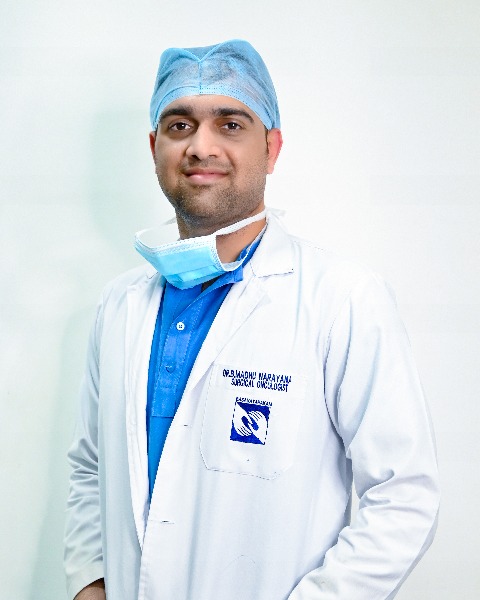Upper Gastrointestinal (lips to ileocecal valve, including esophagus and stomach)
E480: Outcomes of Three-Port Minimally Invasive Transthoracic Esophagectomy for Resectable Esophageal Cancer in Prone Position

RAJU KVVN, MS Mch (he/him/his)
Senior consultant surgical oncologist
BASAVATARAKAM INDO AMERICAN CANCER HOSPITAL AND RESEARCH INSTITUTE
Hyderabad, Telangana, India
MADHU NARAYANA BASODE, MBBS MS DrNB MNAMS
Consultant surgical oncologist
BASAVATARAKAM INDO AMERICAN CANCER HOSPITAL AND RESEARCH INSTITUTE
Hyderabad, Telangana, India- sN
syed Nusrath, n/a
consultant surgical oncologist
smt BIACH& RI
hyderabad, Telangana, India - PJ
Pavan kumar J, n/a
consultant surgical oncologist
smt BIACH& RI
hyderabad, Telangana, India - SN
SRI SIDDHARTHA NEKKANTI, MS Mch
consultant surgical oncologist
BASAVATARAKAM INDO AMERICAN CANCER HOSPITAL AND RESEARCH INSTITUTE
Hyderabad, Telangana, India
ePoster Abstract Author(s)
Submitter(s)
Author(s)
: Esophageal cancer presents diagnostic and therapeutic challenges due to its often advanced stage at detection. This study offers a comprehensive analysis of patients undergoing Three-Port Minimally Invasive Transthoracic Esophagectomy (3P-MIE) in the prone position, focusing on surgical techniques, morbidity, mortality, histological findings, and survival outcomes.
Methods:
Data from 176 patients who underwent 3P-MIE for resectable esophageal cancer in the prone position from January 2010 to March 2023 were analyzed. The majority of patients underwent a two-field lymphadenectomy (n173), while 3 patients had three-field nodal dissection. The abdominal component was performed using either laparoscopy or minilaparotomy. Cervical esophago-gastric anastomosis was performed in all patients using a semi-mechanical technique.
Results:
Demographic data showed a median age of 52 years (range: 21-73) with 99 females and 77 males. Predominantly, patients had squamous cell carcinoma (SCC) histology (n 151), while others exhibited adenocarcinoma (n 21), sarcomatoid carcinoma (n 2), adenosquamous carcinoma (n 2). Disease staging encompassed T1 (n 2), T2 (n 16), T3 (n 125), and T4 (n 28), with nodal involvement observed in 101 patients. Pre-treatment, the median tumor length and width were 6 cm (range: 2.5-13.8 cm) and 1.6 cm (range: 0.5-7 cm), respectively. Twenty-seven patients underwent upfront surgery, neoadjuvant chemoradiation (NACRT group) was delivered to 135 cases, neoadjuvant chemotherapy (NACT group) in 11, and salvage surgery in 3. Surgical details revealed a median operative time of 370 minutes (range: 90-580) and median blood loss of 175 mL (range: 50-2000 mL). The median ICU stay was 4 days (range: 2-22), with a median hospital stay of 9 days (range: 5-38). Thirty-day mortality was observed in 9 patients, with 11 patients succumbing within 90 days post-surgery. The median overall survival (OS) was 18.5 months (range: 0-158), and the median disease-free survival (DFS) was 12 months (range: 0-158). Histological findings revealed a median of 20 nodes retrieved (range: 0-60) with positive margins in 6 cases. The median nodal harvest was 15 nodes in the upfront group and 20 nodes in the NACRT group.
Conclusions: Three-port minimally invasive transthoracic esophagectomy with extended nodal dissection in the prone position is a feasible and safe approach.
Learning Objectives:
- 1.understand about the feasibiity of carrying out an extended lymph node dissection with just 3 ports
- 2.safety of carrying out the procedure with low morbidity and mortality
- 3.adequate lymphadenectomy with three port technique
